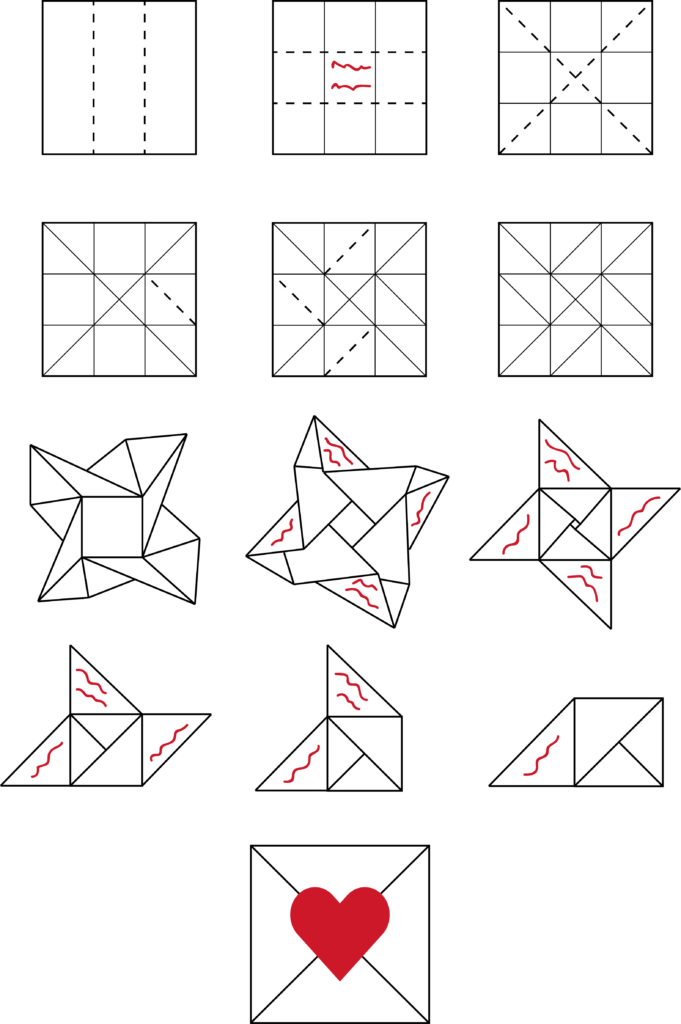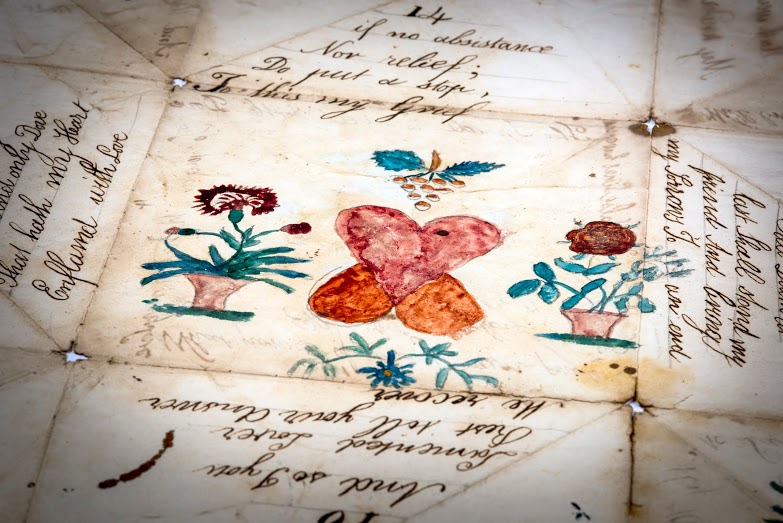For February’s Object of the Month, we have decided to search our collections for love tokens inspired by Valentine’s Day. Let’s look back at one of the more popular traditions. The Valentine Puzzle Purse was a popular method of spreading messages of love and romance.

The oldest known printed Valentine cards date back to 1797 almost 50 years before printed Christmas cards. However, some of the earliest Valentine-themed puzzle purses can date back to the 1770s. One example can be found in the Free Library of Philadelphia and is dated to 1769. This style of cards grew in popularity throughout England and Colonial America right through to the 18th and early 19th centuries.
Named Puzzle Purse for the intricate way they are folded, as you unfold the purse it slowly reveals a new part of the hidden message inside. The decoration of the purse was just as much an act of love as the message written inside, with some being minimal and others being extravagant in design. Key motifs were flowers and other foliage, birds, hearts, and people.

Another layer of symbolism to these love tokens comes from the floral motifs often used as decoration. Between 1600-1900 ‘Floriography’ or the language of flowers was a popular way for courting couples to exchange romantic messages privately. Different flowers were attributed different meanings. These meanings could change depending on the flower’s colour or what plants were arranged together.
Looking at the Puzzle Purse that we have out on display in our Curiosity cabinet, you can see some beautifully illustrated flowers, they appear to be Red Roses, Red Carnations, and Forget-Me-Not. Possibly added to secretly let the receiver know the sender’s true romantic intentions.
Floriography of Red Rose, Red Carnation, and Forget-Me-Not:
- Red Rose-‘Love, I love you’
- Red Carnation-‘ Alas for my poor heart, my heart aches, deep love’
- Forget-ME-Not-‘True love memories, do not forget me’

